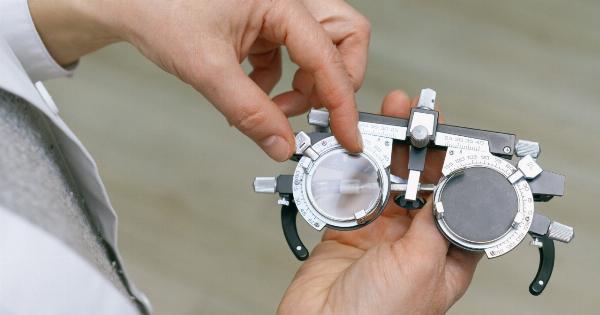General anesthesia is a medical technique that involves inducing a reversible state of unconsciousness in a patient to facilitate various medical procedures.
It is commonly used during surgeries, as well as in certain diagnostic or therapeutic procedures that may be too uncomfortable or painful for a patient to undergo while awake.
The History of General Anesthesia
The use of general anesthesia can be traced back thousands of years. Ancient civilizations such as the Egyptians, Greeks, and Indians had their own methods of inducing unconsciousness during medical procedures.
However, it was not until the 19th century that significant advancements were made in the field of anesthesia.
In 1846, an American dentist named William T.G. Morton successfully demonstrated the first public use of inhaled ether as a general anesthetic.
This breakthrough paved the way for the development of other anesthetic agents and revolutionized the field of surgery.
How Does General Anesthesia Work?
General anesthesia works by altering the normal functioning of the brain and nervous system, resulting in a temporary loss of consciousness.
The exact mechanisms of action are still not fully understood, but researchers have identified several key components involved in the process.
Anesthesia Induction
The first stage of general anesthesia is known as induction. During this stage, an anesthesiologist administers a combination of medications to the patient through intravenous injection or inhalation.
These medications typically include a hypnotic agent, such as propofol or thiopental, which induces loss of consciousness, as well as analgesics to prevent pain and muscle relaxants to ensure muscle relaxation.
Maintaining Anesthesia
Once the patient has been induced into a state of unconsciousness, the anesthesiologist will carefully monitor their vital signs and adjust the anesthesia as needed to maintain an optimal level of unconsciousness throughout the procedure.
This may involve administering additional anesthetic agents, adjusting the concentration of inhaled gases, or using intravenous medications.
Types of Anesthetic Agents
There are several different types of anesthetic agents that can be used during general anesthesia, depending on the specific needs of the patient and the nature of the procedure.
Inhaled Anesthetics
Inhaled anesthetics, such as sevoflurane or desflurane, are commonly used during general anesthesia.
These agents are administered through a mask or an endotracheal tube and are inhaled by the patient, allowing them to be rapidly absorbed into the bloodstream and reach the brain, where they exert their effects.
Intravenous Anesthetics
Intravenous anesthetics, such as propofol or midazolam, are administered directly into the patient’s bloodstream through an intravenous line. These medications act quickly and are often used during induction to induce rapid unconsciousness.
Adjunct Medications
In addition to anesthetic agents, various adjunct medications are used during general anesthesia to provide pain relief, prevent complications, and enhance the overall effectiveness of the procedure.
Examples of adjunct medications include opioids for pain control, antiemetics to prevent nausea and vomiting, and antibiotics to prevent infection.
Anesthesia Monitoring
During general anesthesia, the patient’s vital signs, including heart rate, blood pressure, oxygen levels, and end-tidal carbon dioxide levels, are continuously monitored to ensure their safety and well-being throughout the procedure.
Advanced monitoring techniques, such as electroencephalography (EEG) and bispectral index (BIS) monitoring, may also be used to assess the depth of anesthesia and the patient’s level of consciousness.
Anesthesia Recovery
After the completion of the procedure, the anesthesiologist will gradually reduce or stop the administration of anesthetic agents, allowing the patient to regain consciousness.
During this recovery phase, the patient’s vital signs and overall condition are closely monitored until they have awakened fully and are deemed stable enough for transfer to a post-anesthesia care unit (PACU) or a regular hospital room.
Potential Risks and Complications
While general anesthesia is considered safe for the majority of patients, there are potential risks and complications associated with its use.
These can include adverse reactions to the anesthetic agents, breathing difficulties, allergic reactions, postoperative nausea and vomiting, and even rare but serious complications, such as anesthesia awareness (when a patient becomes conscious during surgery) or malignant hyperthermia (a potentially life-threatening condition characterized by a rapid increase in body temperature).
The Role of the Anesthesiologist
Anesthesiologists play a crucial role in the administration and monitoring of general anesthesia.
They are specially trained medical doctors who are experts in ensuring the safety, comfort, and well-being of patients undergoing surgical or other medical procedures.
During the preoperative phase, an anesthesiologist will evaluate a patient’s medical history, allergies, and overall health to develop an appropriate anesthetic plan.
They will also educate the patient about the anesthesia process and answer any questions or concerns they may have.
Throughout the procedure, the anesthesiologist closely monitors the patient’s vital signs, adjusts the anesthesia as needed, and manages any complications or emergencies that may arise.
They are responsible for maintaining the patient’s stability and ensuring a smooth and comfortable experience during and immediately after the procedure.
Conclusion
The science of general anesthesia has come a long way since its humble beginnings. Through ongoing research and technological advancements, anesthesiologists continue to refine their techniques and improve patient outcomes.
General anesthesia remains an essential component of modern medicine, allowing for the safe and effective performance of complex surgeries and medical procedures.





























